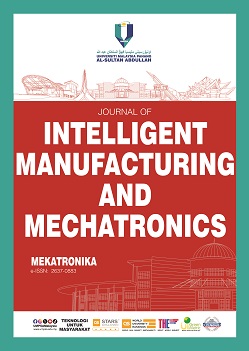A PID-Controlled Approach in the Design of a Physiotherapy Robot for Upper Arm Rehabilitation
DOI:
https://doi.org/10.15282/mekatronika.v5i2.9972Keywords:
Physiotherapy Robot, PID Controller, 2-DOF Robot Arm, Controller Performance, Rehab Robot ArmAbstract
The main objective to develop controller for the rebab robot, therefore to achieve the main objective, the subsequent objective is to formulate the mathematical modelling of 2 DOF of upper arm, to develop upper arm rebab robot, evaluate the performance of the controller and facilitate the creation of new and more improved devices for physiotherapy robot ; therefore, this research will investigate rehabilitation robots, it have shown a high potential for improving the patient’s mobility, improving their functional movements and assisting in daily activities. However, this technology is still an emerging field and suffers from several challenges like compliance control and dynamic uncertain caused by the human–robot collaboration. The main challenge addressed in this thesis is to develop a controller to the rehab robot and formulate the mathematical modelling of 2 DOF of upper arm. Ensure that the exoskeleton robot provides a suitable compliance control that allows it to cooperate perfectly with humans even if the dynamic model of the exoskeleton robot is uncertain. The PID controller is a widely used control algorithm that aims to regulate a system's output by continuously adjusting its input. In the context of a two-degree-of-freedom (2-DOF) robot arm, the PID controller plays a crucial role in achieving precise and accurate arm movements. The Proportional-Integral-Derivative (PID) controller employs three main components to achieve control: proportional, integral, and derivative terms.
Downloads
Published
Issue
Section
License
Copyright (c) 2023 Universiti Malaysia Pahang Publishing

This work is licensed under a Creative Commons Attribution-NonCommercial 4.0 International License.




